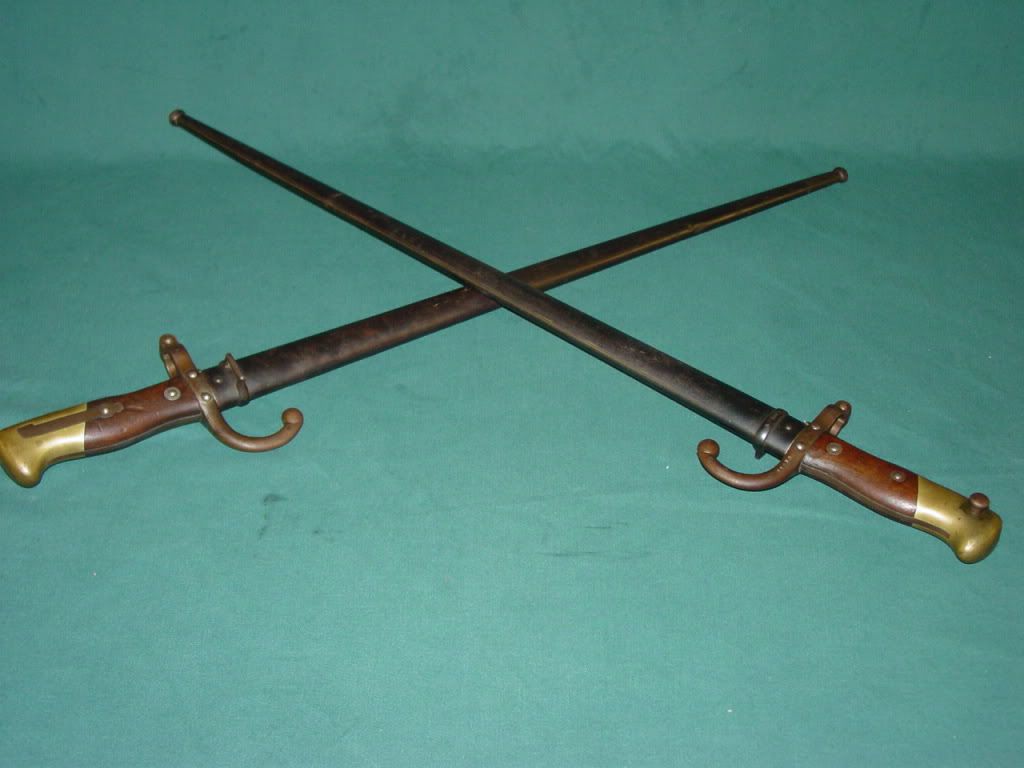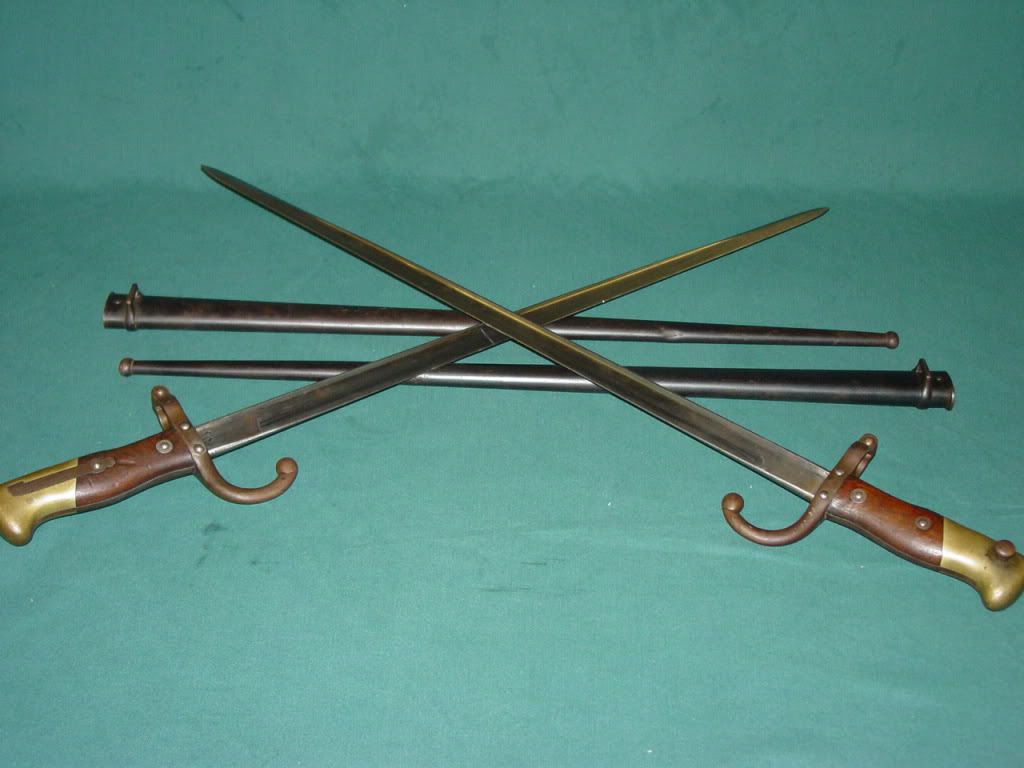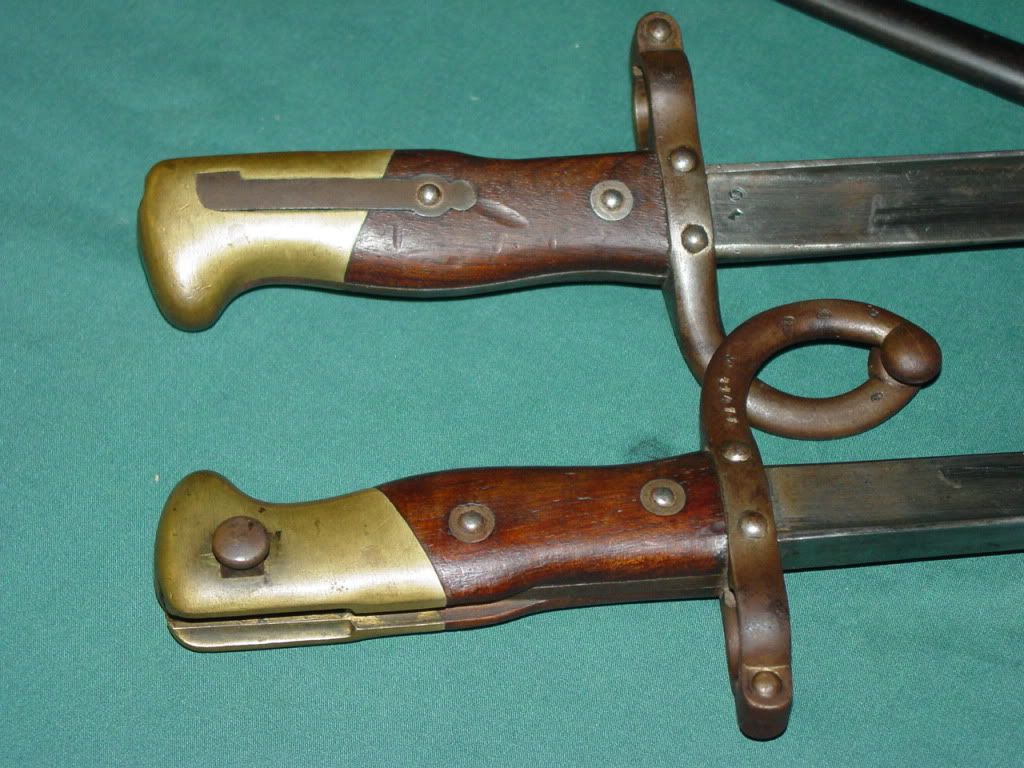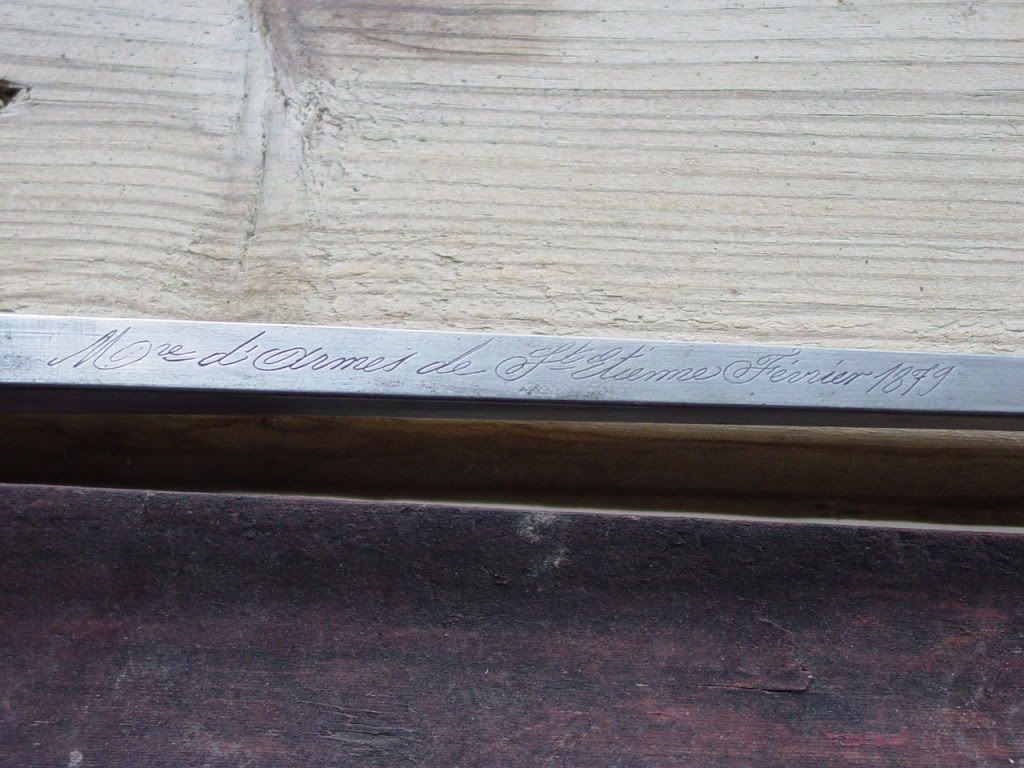12 March 2010, 18:25
philny1Old bayonets--pretty pics
I have two old bayonets with 20.5" blades and metal sheaths. Any info would be appreciated.
Thanks
Phil




12 March 2010, 22:30
JIm YackleyFrench Model 1874 for Gras Rifle. Reference Kiesling Vol. II #415
14 March 2010, 19:39
philny1quote:
Originally posted by JIm Yackley:
French Model 1874 for Gras Rifle. Reference Kiesling Vol. II #415
Thank you.
Phil
16 March 2010, 22:38
EdmondInteresting pieces. Post your questions about value on Gunboards' French Firearms board.
 http://forums.gunboards.com/index.php
http://forums.gunboards.com/index.php17 March 2010, 03:24
philny1Thanks for your help. Had a friend send me this info:
Description:
The sword-bayonet models 1874 has a straight blade with a flat back giving it a T section. The back of the blade is made as a false edge for the last 11 cm to the tip which is moved back from the middle axis.
The crossguard has a hooked quilon, bent toward the blade end ending with a lenticular finial. The muzzle ring, open on the upside, is slightly distant from the back of the handle. The jaws or the ring opening are closed by a doomed rivet. Under these jaws is a slot for the small stud of the barrel. The crossguard is held by brazing and two doomed rivets. This crossguard, for economy reasons is the same than for the sword bayonet model 1866, but with rivet instead of screw for jaws.
The handle has a rounded brass cast pommel, and two walnut grips. The junction of the grips with the pommel is slant. Pommel is riveted to the tang by two flush brass rivets. Grips are held by two doomed rivets on washers, the tail of the locking spring acting as one of these washers. On the back of the handle is a long groove, for the barrel bar, ending inside of the muzzle ring. The rear sides of the grips and pommel act as sides of this groove. The grips are stepped forward to the crossguard, and the tang is there flush to the handle. On the back of the pommel, rear of the groove, is the slot for the bayonet stud, with a rounded grinding.. On the left side of the pommel is the press stud for locking, with a rounded protruding head, and on the other side, is the long L shaped steel spring, with a small tail to avoid any movement in the grips.
The scabbard is steel, with a large olive finial. The mouth piece, partly inner, has two springs to clip the blade. It has a small protruding piece at the back.. At 15 mm of the opening is a ring with a bridge on the front side. Mouthpiece is held by one doomed rivet on each side. The scabbard is completely blued.
"Domed rivet" -- Not a big deal except that I ended up on Google looking for a "doomed" rivet.
Edmond can correct me on this. The French inscription reads:
"M're d'armes de St. Etienne, Fevrier, 1879"
Master of arms of St. Etienne, February, 1879
Hard to know if that's the mfg. date or patent date.
24 March 2010, 05:30
JIm YackleyThese bayonets were manufactured by several arsnals and were marked by date and arsenal of manufacture, again reference of my first post. If in you need more proof look at BAYONETS from Janzen's notebook page 70.
25 March 2010, 01:54
Edmondquote:
Originally posted by 0X0:
"Domed rivet" -- Not a big deal except that I ended up on Google looking for a "doomed" rivet.
Edmond can correct me on this. The French inscription reads:
"M're d'armes de St. Etienne, Fevrier, 1879"
Master of arms of St. Etienne, February, 1879
Hard to know if that's the mfg. date or patent date.
manufacturing date.
M're is "Manufacture"
http://en.wikipedia.org/wiki/M...e_Saint-%C3%89tienne






